
Starting June 1st, 2023 Our warehouse fee will be $0.65/cubic foot per month
In effort to lower the warehouse storage fee during inflation, we have went narrow aisle racking.This construction took us four months but the project is finally completed. With narrow aisle racking, we are able to drop storage by 24%.We as partners will go through this inflation together.
06/16/2025
Transportation route optimization is the key to running efficient, cost-effective logistics operations in today's fast-paced delivery environment. By leveraging data and intelligent planning, businesses can reduce costs, improve delivery reliability, and enhance customer satisfaction. In this article, Worldcraft Logistics will guide you through the most comprehensive way to run Transportation route optimization effectively for your business.
Transportation route optimization is the strategic process of identifying the most efficient, cost-effective paths for vehicle fleets to follow not just the shortest distance, but the smartest route. It’s a critical component of delivery and logistics management that enables companies to meet customer expectations, reduce operational costs, and improve supply chain performance.
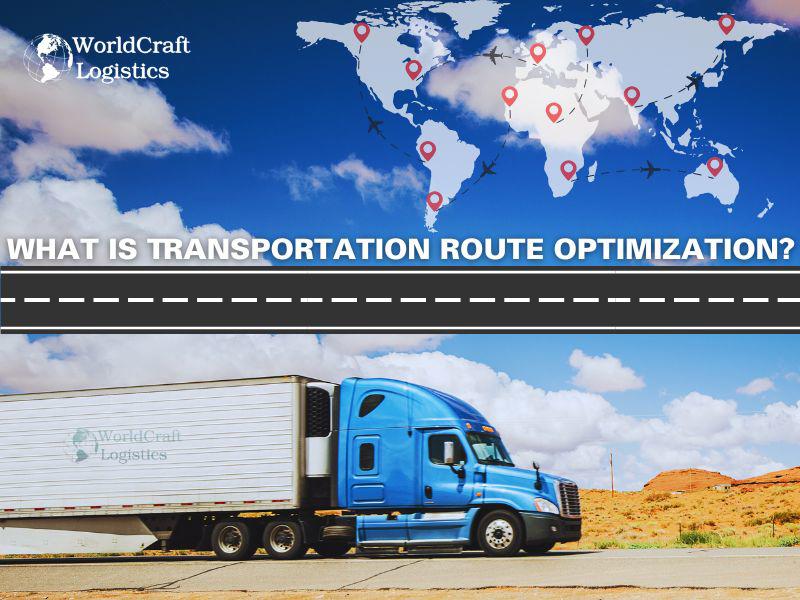
While many equate route optimization with simply shaving off miles, the reality is far more complex. True optimization takes into account a wide range of variables, including:
Traffic congestion: A slightly longer route with lighter traffic often results in faster, more fuel-efficient deliveries.
Vehicle capacity and driver schedules: Efficient routing ensures full truckloads and optimal driver utilization within legal hours-of-service limits.
Customer delivery windows: Route optimization must align with time-sensitive customer expectations especially in last-mile delivery scenarios.
Road infrastructure and limitations: One-way streets, weight-restricted bridges, tunnels, and difficult turns can dramatically affect delivery times and fuel use.
Weather conditions: Rain, snow, or extreme heat can all influence the safest and fastest route choice.
Given these factors, transportation route optimization requires a combination of real-time data, advanced algorithms, and logistics expertise. Whether managing local deliveries or long-haul trucking, companies rely on optimization tools to sequence stops efficiently, minimize delays, and reduce fuel consumption all while enhancing the customer experience.
In practice, optimized routing improves far more than delivery times. It supports lower emissions, driver satisfaction, and greater operational resilience making it a must-have capability for any logistics-driven business in today’s competitive market.
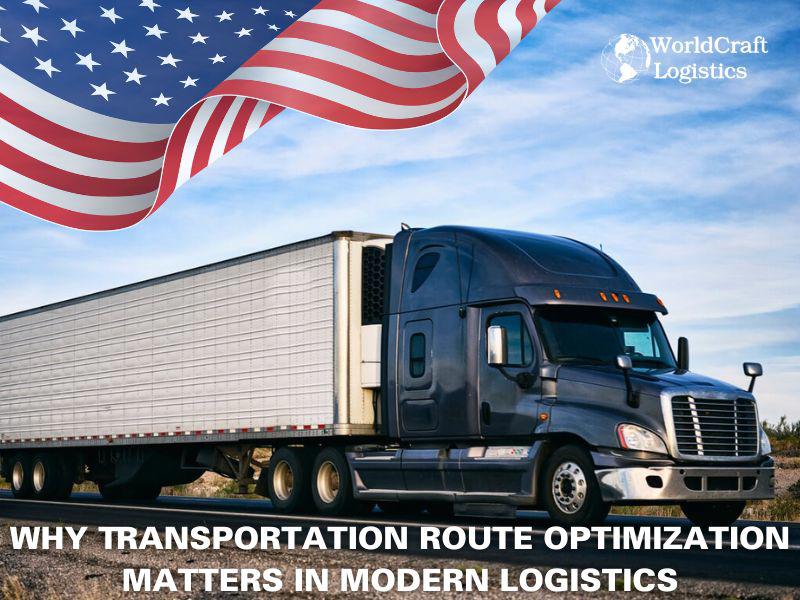
In today’s fast-paced logistics landscape, transportation route optimization is no longer a luxury, it's a necessity. As supply chains grow increasingly complex and customer expectations rise, the ability to plan efficient routes directly impacts a company’s profitability, reputation, and sustainability efforts.
Here’s why it matters now more than ever:
Rising Delivery Demands and Tight Time Windows: With the explosion of e-commerce and same-day delivery services, logistics providers are under intense pressure to fulfill orders faster and more reliably. Route optimization enables dispatchers to schedule deliveries with precision, ensuring timely arrivals even under demanding conditions.
Escalating Fuel and Operational Costs: Fuel is one of the highest variable costs in fleet operations. Optimizing delivery routes helps reduce mileage, idle time, and unnecessary detours significantly lowering fuel expenses and wear-and-tear on vehicles.
Increased Supply Chain Visibility and Control: Modern route optimization systems integrate with fleet tracking, order management, and telematics, providing real-time insights across the supply chain. This visibility allows companies to make data-driven decisions and respond quickly to disruptions.
Better Customer Satisfaction and Service Levels: Customers today expect accurate ETAs, live tracking, and flexible delivery options. Optimized routes help logistics teams meet these expectations consistently, building trust and competitive advantage.
Improved Driver Productivity and Retention: Efficient route plans reduce driver stress, overtime, and route uncertainty. This not only enhances productivity but also supports better driver retention, a major advantage in industries facing labor shortages.
Environmental Impact and Sustainability: Transportation is a leading contributor to greenhouse gas emissions. By minimizing miles driven and idle time, route optimization plays a vital role in reducing a fleet’s environmental footprint aligning logistics operations with sustainability goals.
In short, transportation route optimization is foundational to building a lean, agile, and responsive logistics network. It transforms routing from a daily challenge into a strategic advantage, enabling companies to scale smarter, serve better, and compete harder in a logistics-driven world.
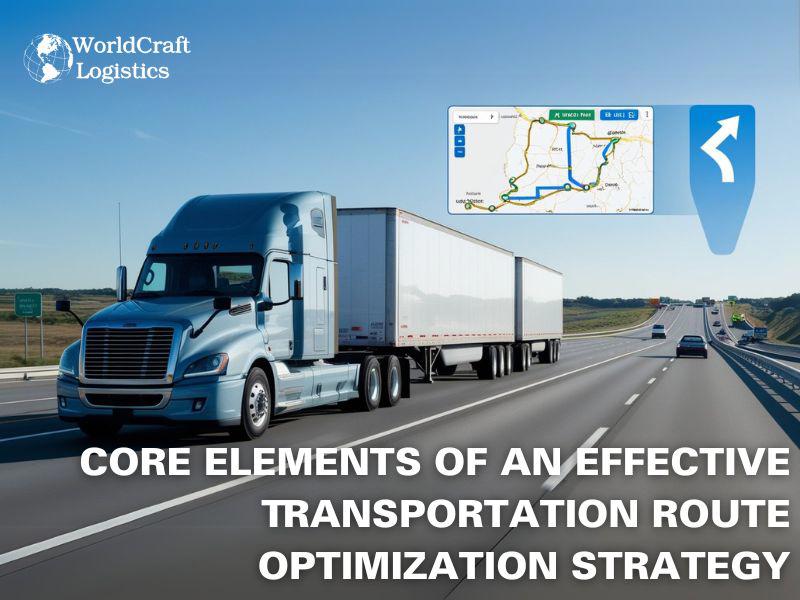
Building a successful transportation route optimization strategy requires more than just mapping out the shortest path. It involves integrating data, technology, and real-world constraints into a dynamic system that can adapt to change and drive efficiency at scale.
Here are the core components of an effective route optimization strategy:
✍️ Real-Time Traffic and Road Condition Data
Effective optimization starts with accurate, up-to-the-minute information. Integrating real-time traffic updates, accident reports, and road closures allows fleets to avoid delays and reroute proactively especially critical for time-sensitive deliveries.
✍️ Delivery Time Windows and Customer Preferences
Modern logistics isn’t just about “fast”; it’s about being “right on time.” Optimization must account for customer delivery windows, prioritizing routes that align with service-level agreements (SLAs) and customer availability.
✍️ Vehicle Capacity and Load Constraints
Optimizing routes means matching the right vehicle to the right load. Factors such as weight limits, volume, refrigeration needs, and multi-stop deliveries must be balanced to ensure efficient and compliant routing.
✍️ Driver Schedules and Regulatory Compliance
A well-optimized strategy respects driver hours-of-service (HOS) regulations, break requirements, and shift patterns. It maximizes driver productivity without overloading or violating labor laws, a key factor in both performance and legal compliance.
✍️ Route Flexibility and Re-Optimization Capabilities
Conditions can change in real-time weather events, customer cancellations, or vehicle breakdowns. A robust strategy includes dynamic re-optimization features that allow dispatchers to adjust routes on the fly while minimizing disruptions.
✍️ Integration with Fleet Management and Delivery Systems
Seamless integration with telematics, GPS, warehouse management systems (WMS), and transportation management systems (TMS) ensures that route plans are actionable and connected across all operational touchpoints.
✍️ Data Analytics and Continuous Improvement
Optimization doesn’t end with route creation. Ongoing analysis of route performance including KPIs like fuel usage, on-time rates, and delivery exceptions enables continuous refinement and smarter planning over time.
A truly effective transportation route optimization strategy is dynamic, data-driven, and tailored to your fleet’s specific goals. When done right, it unlocks not only operational savings but also a more agile, customer-focused logistics operation.
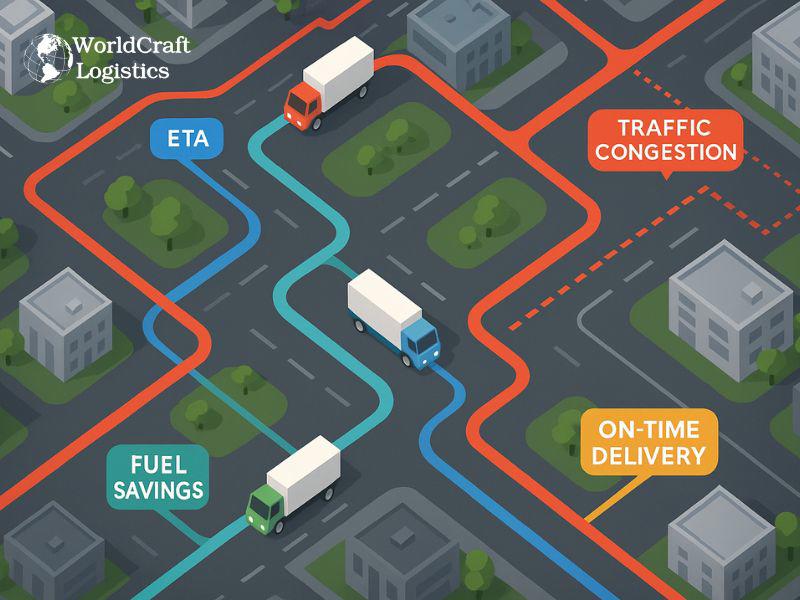
Real-world examples demonstrate just how impactful transportation route optimization can be across industries and fleet sizes. From cutting costs to improving delivery reliability, here are a few cases where route optimization made a measurable difference:
A fast-growing e-commerce company operating across multiple urban centers faced increasing last-mile delivery delays and fuel expenses. By implementing advanced route optimization software that considered real-time traffic, vehicle capacity, and delivery time windows, the company:
Reduced average delivery route length by 18%
Improved on-time delivery rate from 82% to 96%
Cut fuel costs by 12% within the first quarter
This not only improved operational efficiency but also enhanced customer satisfaction during peak seasons.
A national food distributor managing a mixed fleet of refrigerated trucks needed to optimize multi-stop deliveries to restaurants and grocery chains. By using AI-powered route planning and load optimization tools, they:
Increased average truck utilization by 20%
Reduced total miles driven by 15%, lowering CO₂ emissions
Minimized product spoilage and ensured tighter delivery windows
Route optimization played a key role in supporting the company’s sustainability goals while maintaining service reliability.
A regional courier company with a fleet of 80 vehicles struggled with overlapping routes and inconsistent delivery times. After adopting a dynamic routing solution that updated in real time based on package volume and traffic data, the company:
Decreased route overlap by 30%
Enabled each driver to complete more stops per shift
Reduced customer complaints related to missed ETAs by 40%
This optimization not only improved driver morale but also allowed the company to scale without expanding its fleet.
Each of these cases shows that transportation route optimization isn't just theory, it's a proven, practical solution that drives real results in diverse logistics environments.
Implementing a robust transportation route optimization strategy delivers far-reaching benefits across operations, customer service, and sustainability. Here’s how optimized routing creates tangible value for logistics teams and businesses:
With well-planned routes that minimize backtracking, avoid congestion, and cluster deliveries logically, drivers can complete more stops in less time. This leads to increased daily productivity and fewer delays without increasing driver workload.
Optimized routing helps companies lower their fuel consumption, reduce vehicle maintenance costs, and make better use of existing fleet resources. It also reduces the need for overtime pay, extra trips, or underutilized routes translating directly into bottom-line savings.
By accounting for traffic, road conditions, and time windows, route optimization improves delivery time predictions. This means customers receive more accurate ETAs and your team maintains a higher on-time delivery rate, a key competitive differentiator in logistics.
Modern route optimization tools collect and analyze detailed performance data from delivery speed to idle time. These insights allow logistics managers to identify bottlenecks, adjust strategies, and continually refine delivery operations for better efficiency.
Smarter routing minimizes unnecessary stress and confusion for drivers. Clear, optimized delivery plans reduce time spent navigating traffic, cut down on overtime, and support better route predictability leading to higher driver satisfaction and lower turnover.
By reducing total miles driven, idle time, and inefficient detours, route optimization directly contributes to lower greenhouse gas emissions. For companies pursuing sustainability goals, this offers both environmental impact and public relations value.
In short, transportation route optimization is more than a logistics upgrade; it's a strategic investment that improves performance, strengthens customer relationships, and aligns operations with the demands of a modern, sustainable supply chain.
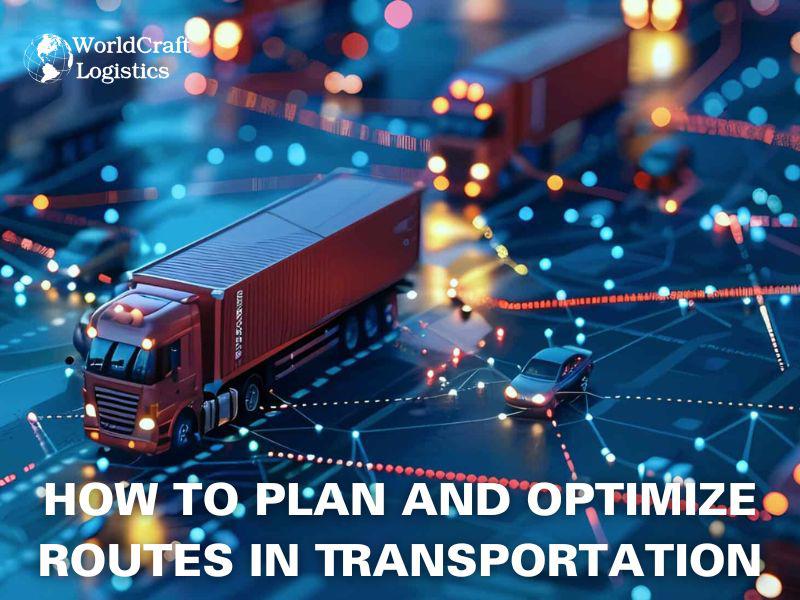
Start by reviewing your existing routing system. Look at key metrics like average delivery time, miles driven, fuel consumption, and missed deliveries. Identifying inefficiencies and bottlenecks lays the groundwork for effective optimization.
Set measurable goals for your route optimization efforts. Do you want to reduce costs, shorten delivery windows, improve on-time performance, or lower your carbon footprint? Defining objectives ensures your strategy stays focused and result-oriented.
Gather all relevant data including customer addresses, delivery time windows, traffic patterns, vehicle specs, and driver schedules. The accuracy and completeness of this data will directly impact the success of your optimization plan.
Invest in routing software or platforms that support real-time traffic analysis, multi-stop route planning, dynamic re-optimization, and integration with your existing TMS, WMS, or fleet management systems.
Create route plans that factor in real-world constraints: road infrastructure, delivery priorities, vehicle capacity, customer time windows, and legal driving hours. Aim for balanced workloads across drivers while minimizing empty miles and delays.
Ensure drivers, dispatchers, and logistics managers are trained on how to use your new route planning tools and follow optimized schedules. Clear communication and adoption are key to turning good planning into good execution.
Deploy the new routes and track performance in real time. Monitor KPIs like on-time delivery rate, fuel use, route completion time, and customer feedback. Make sure your team is ready to adjust quickly if issues arise.
Optimization is not a one-time task. Collect feedback from drivers and customers, analyze performance trends, and refine your strategy regularly. Continuous improvement keeps your routing system resilient and responsive to change.
Understanding transportation route optimization can help logistics professionals unlock major efficiencies. Below are answers to some of the most frequently asked questions in the industry:
Delivery companies use advanced route optimization software that factors in traffic, distance, delivery windows, vehicle capacity, and driver availability. These systems use real-time and historical data to calculate the most efficient delivery sequences, reduce travel time, and increase daily delivery volumes.
Google Maps is excellent for basic navigation and multi-stop route planning for personal use. However, it lacks the advanced logistics features required for full-scale transportation route optimization, such as bulk route generation, dynamic rerouting, load balancing, and integration with fleet management systems.
Mileage is reduced by clustering stops efficiently, avoiding congested routes, eliminating backtracking, and accounting for constraints like time windows and driver breaks. Optimization software applies algorithms to ensure every route uses the fewest miles while still meeting delivery objectives.
Route optimization is the strategic process of finding the best paths for deliveries across any stage of the supply chain. Last-mile delivery refers specifically to the final leg of a product’s journey to the customer. While route optimization is crucial for last-mile success, it also applies to middle-mile and long-haul logistics.
Transportation route optimization helps address challenges such as rising fuel costs, inefficient routes, missed delivery windows, driver fatigue, underutilized vehicles, and low customer satisfaction. It streamlines operations, improves service, and lowers environmental impact.
Savings vary by fleet size and current inefficiencies, but companies often report fuel cost reductions of 10–20% after implementing route optimization. Reductions come from shorter routes, less idling, and smarter dispatching all contributing to significant long-term savings.
That’s it for Worldcraft Logistics’ roundup of route optimization and its specific guidance. Route optimization is a powerful lever for reducing costs, improving delivery performance, and creating more agile logistics operations. By taking into account real-time data, vehicle constraints, and customer expectations, it enables smarter routing decisions across every mile. From cutting fuel costs to increasing on-time performance, route optimization delivers measurable value, making it an essential strategy for any logistics business that wants to stay competitive and sustainable.
SEO
Digital Marketing/SEO Specialist
Simon Mang is an SEO and Digital Marketing expert at Wordcraft Logistics. With many years of experience in the field of digital marketing, he has shaped and built strategies to effectively promote Wordcraft Logistics' online presence. With a deep understanding of the logistics industry, I have shared more than 500 specialized articles on many different topics.
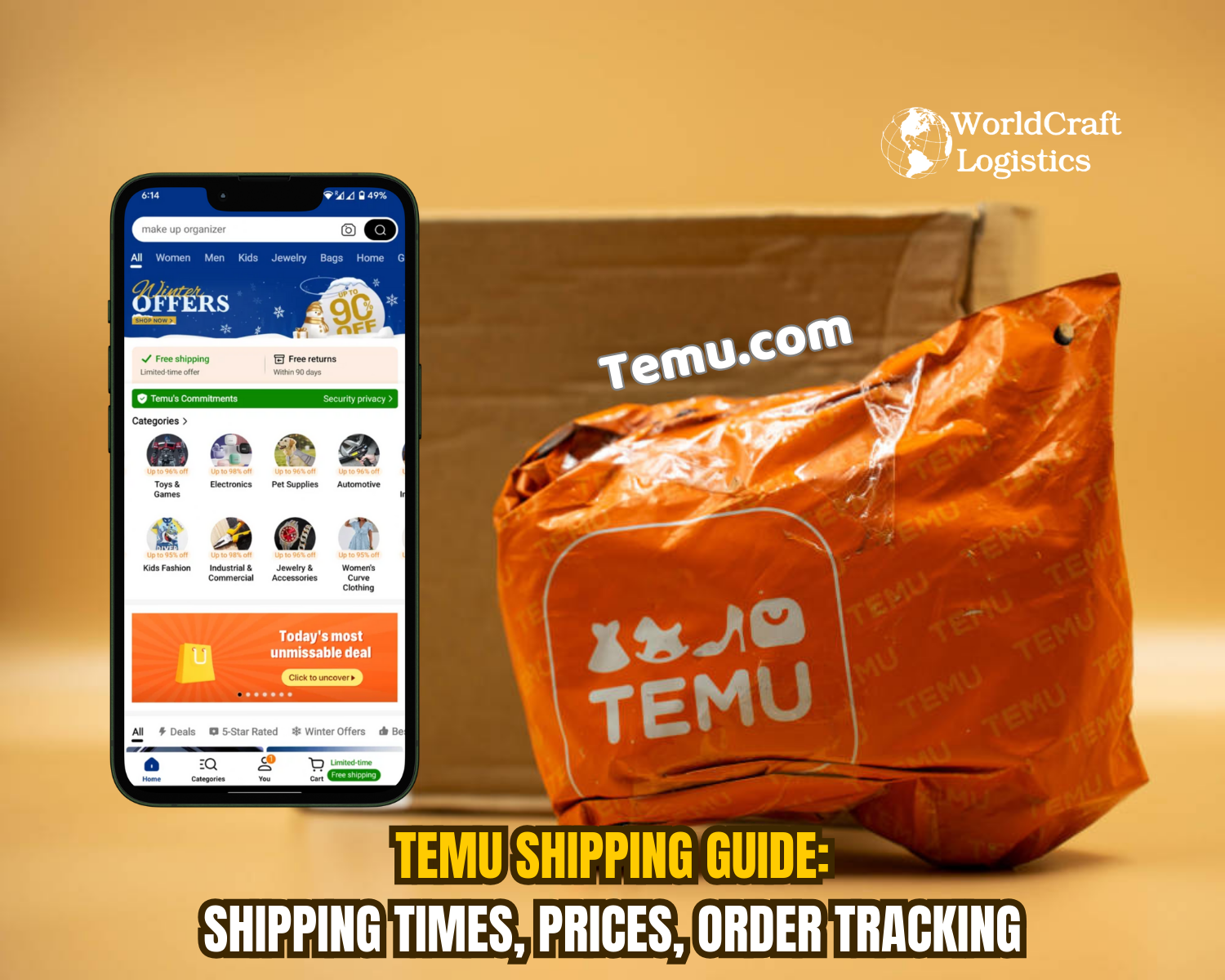
Education
01/05/2025
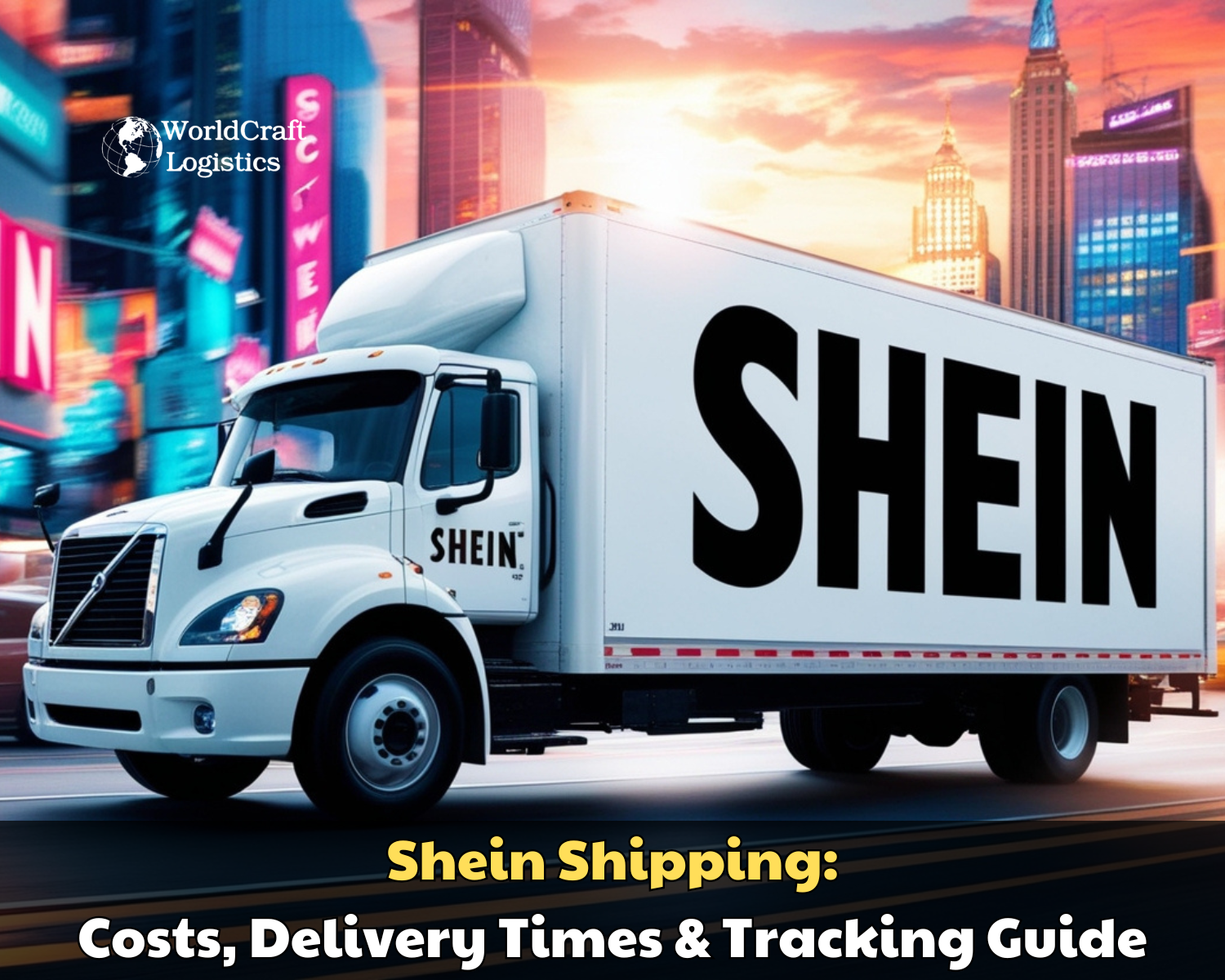
Education
02/18/2025
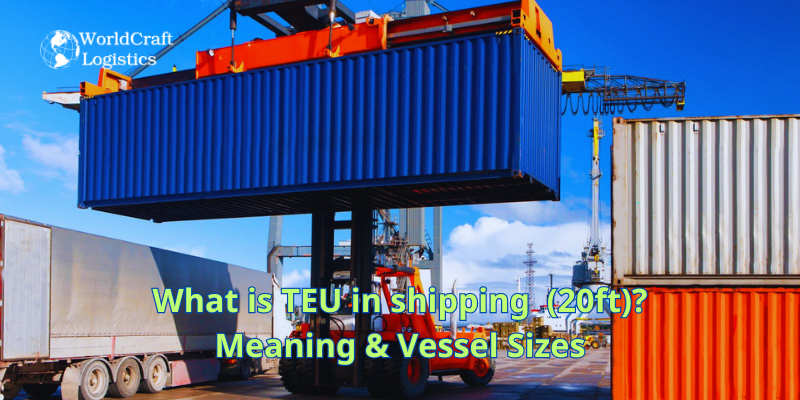
Education
01/01/2024
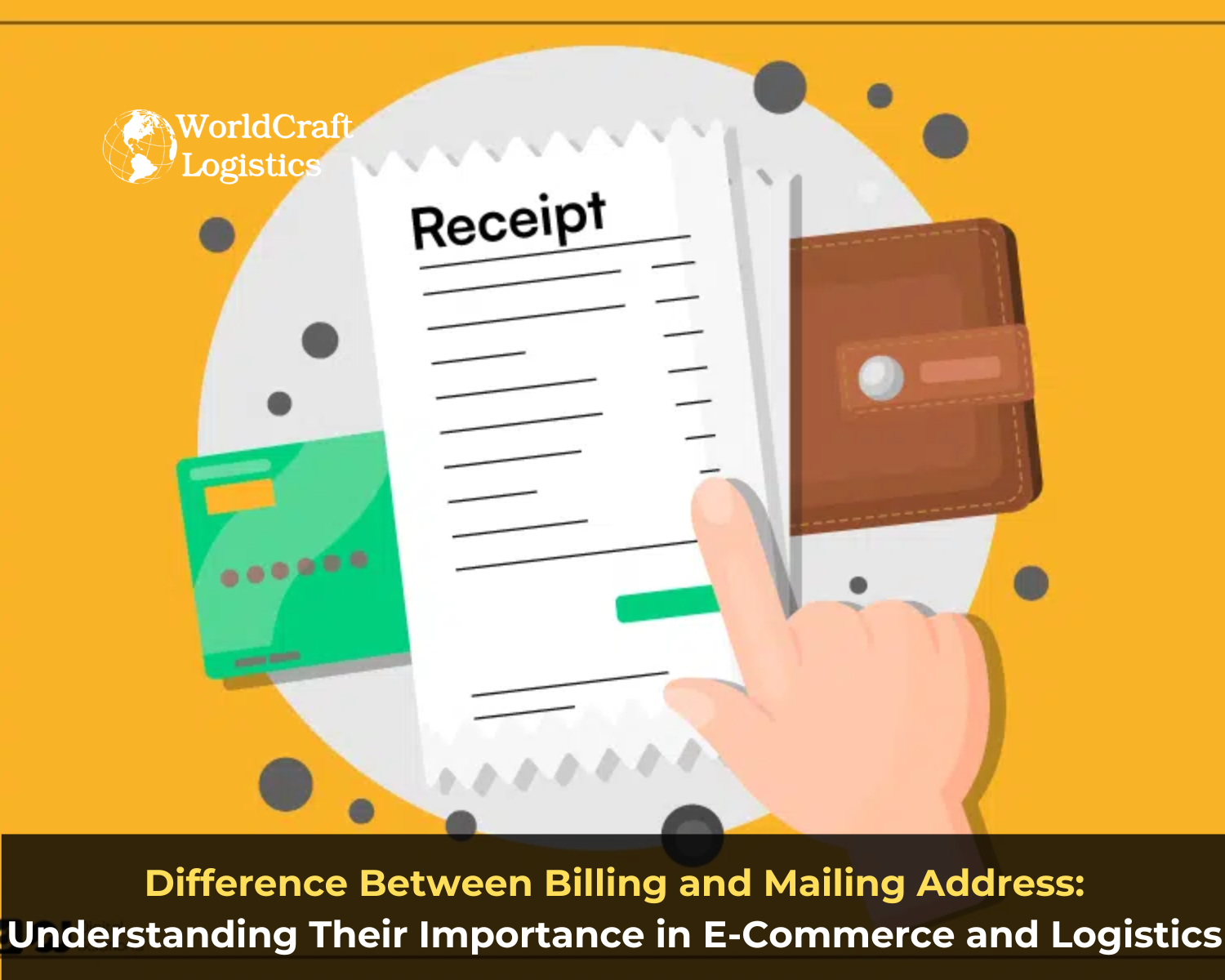
Education
08/28/2024

Education
11/13/2023